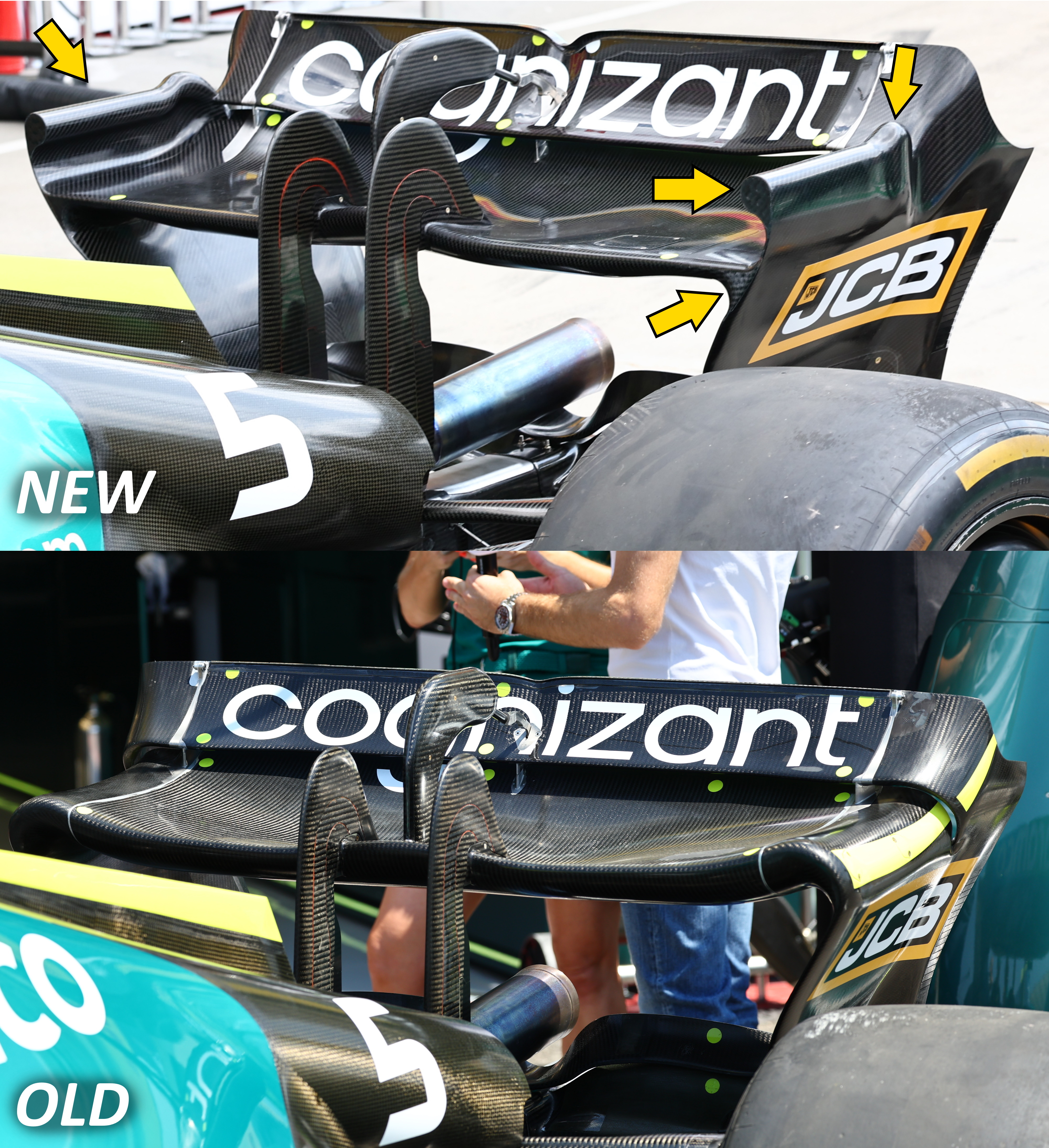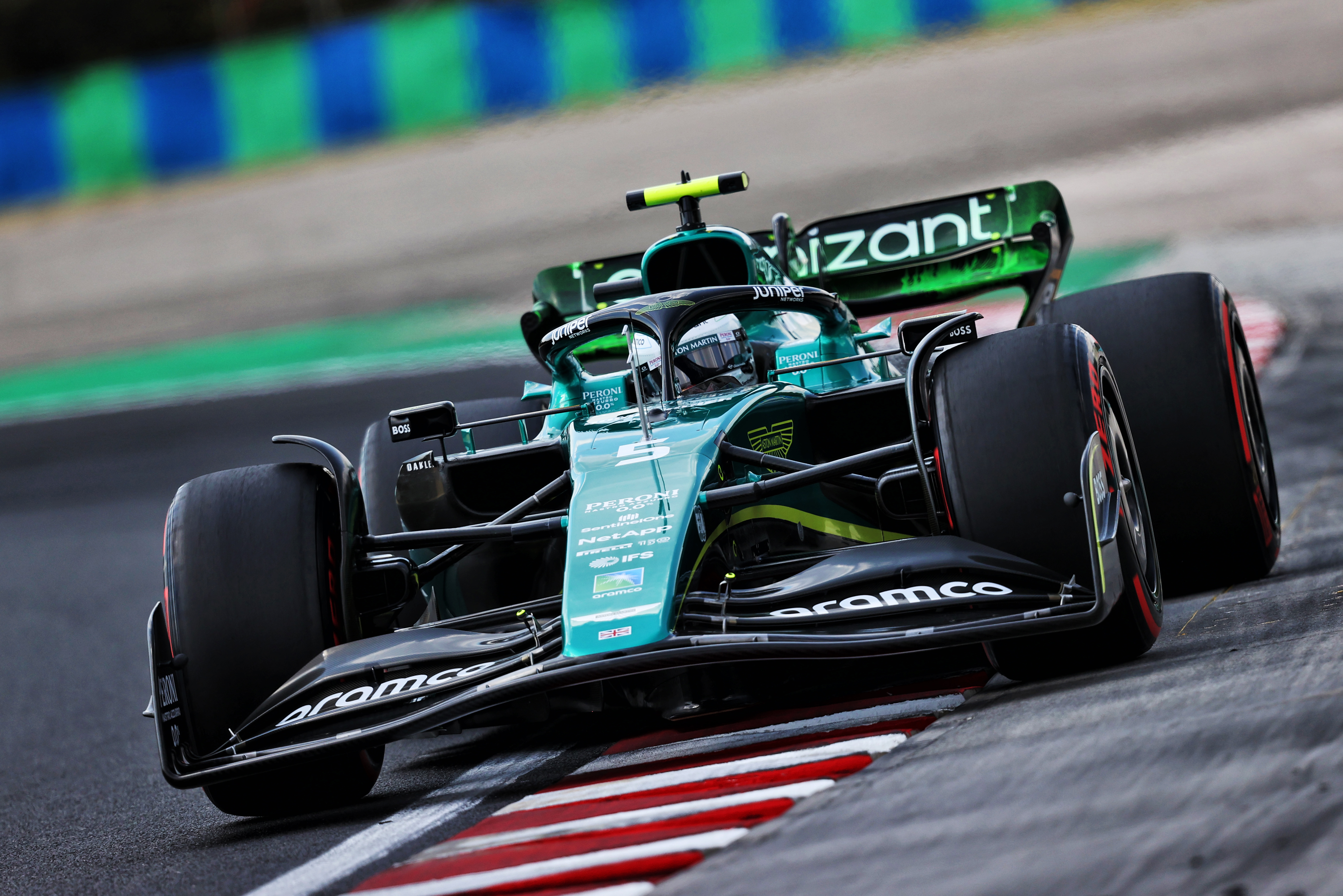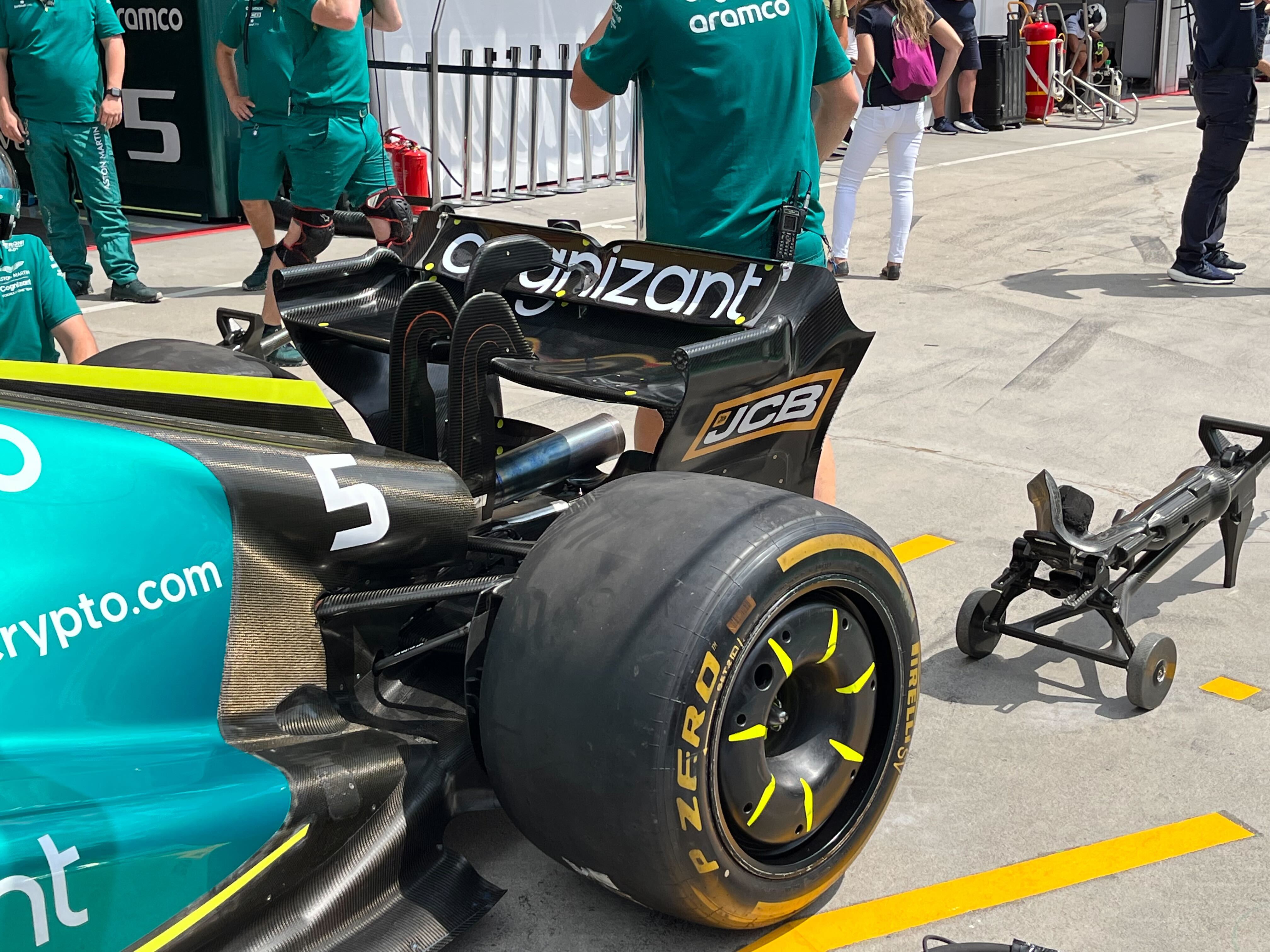Up Next

Aston Martin has come up with an interesting interpretation of the rear wing regulations with its new endplate design.
We have to assume that this is fully compliant with the rules, although that doesn’t mean that the design has to match the intent. Note the radiuses on the top edge to comply with the stipulated curvatures – that would make for an interesting onboard camera position.

In the past, the rear wing endplates were the highest part of the rear wing. But because of that there were three different pressures all trying to mix together – a positive pressure on the wing’s upper surface, a low pressure on the wing’s undersurface, and a roughly ambient pressure on the outside of the actual endplate.
Because of these different pressures all trying to balance out, the upper-surface airflow would spill over into the ambient pressure, which would then be pulled into the low pressure coming off the undersurface of the wing. This would generate a large vortex, which was visible when running in the wet, creating the turbulence F1 wanted to reduce.
Applying this intended radius on the top edge of the upper wing surface to the outside surface of the wing endplate eliminated or at least reduced two of those three pressure differentials. This dramatically reduces the strength of the vortex, meaning that the following car has less turbulence to cope with.
What Aston Martin has done wasn’t the intention of the new regulations, which can be easily seen by how all the other teams have interpreted the rules. They have all dramatically simplified the intersection of the rear wing surface to the endplates. But as Aston Martin has proved, we all know intention and application are two very different things.

The effect is that Aston Martin now has an endplate that, rather than being fully integrated with the rear wing’s upper surface, is a lot more complex.
Anything that can be done to reduce the airflow spilling off the upper surface of the rear wing will increase the low pressure on the undersurface of the wing and, in turn, increase the load the undersurface can generate. However, it will also increase the drag.

Efficiency is not so critical in Hungary, so with a normal rear wing efficiency level of something like 3.5:1 downforce to drag, a modification like this will probably be at a ratio of something like 2:1 downforce to drag.
We’ll have to wait and see how it performs. Given Aston Martin’s recent struggles, having both cars in the top 10 would have to be seen as a positive, but even then it will be very difficult to assess its true potential.





